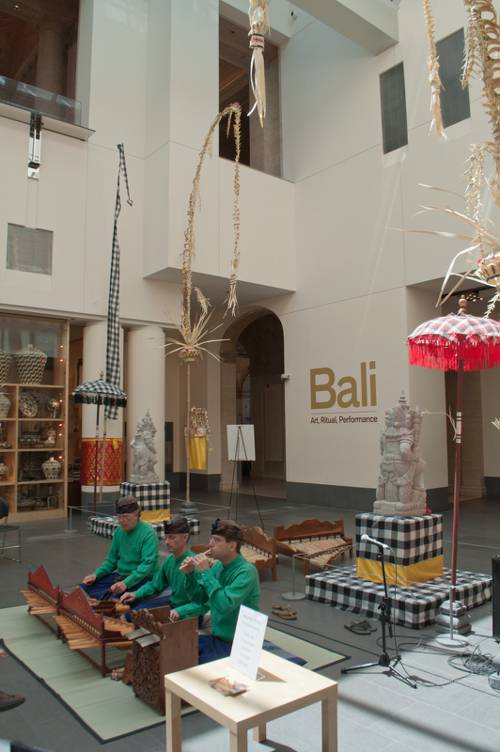
FAQ About The Evolution of Live Streaming in Music Performance

What is live streaming in music performance?
Live streaming in music performance refers to broadcasting a musical event over the internet in real time. This allows audiences from anywhere in the world to watch and listen to the performance as it occurs, without being physically present at the venue. Platforms like YouTube, Facebook Live, Instagram Live, and Twitch are commonly used for such streams, making them accessible to a wide audience.

When did live streaming in music become popular?
Live streaming in music began gaining popularity in the early 2010s, with advancements in technology and increased internet accessibility. However, it saw a significant surge during the COVID-19 pandemic, as artists and venues adapted to lockdowns and social distancing measures, offering audiences virtual access to performances.

How has live streaming changed the music industry?
Live streaming has dramatically transformed the music industry by providing greater accessibility and reaching global audiences without geographical limitations. It allows artists to engage with fans directly, fostering community interaction and offering new revenue streams through virtual ticketing, subscriptions, and donations.

Why do artists choose live streaming for performances?
Artists opt for live streaming for several reasons, including the ability to reach a global audience, engage directly with fans, and perform from anywhere without logistical constraints. It offers an opportunity for creativity and interaction beyond traditional concert settings, and can also be more cost-effective than physical tours.

What are the benefits of live streaming for audiences?
Audiences benefit from live streaming as it allows them to access performances from anywhere, often at lower costs compared to attending live shows in person. It enables fans to connect with artists and other attendees in real-time, creating a communal experience. Moreover, it offers additional content such as behind-the-scenes access, interviews, and interactive sessions.

What technological advancements have supported the growth of live streaming in music?
Technological advancements such as high-speed internet, improved audio-visual equipment, and streaming platforms have greatly supported the growth of live streaming in music. Developments in mobile technology, social media platforms, and video encoding have also played a pivotal role, enabling smoother, high-quality streams worldwide.

How do artists monetize live-streamed performances?
Artists can monetize live-streamed performances through various methods such as virtual ticket sales, fan donations, subscriptions, merchandise sales, and sponsorship deals. Some platforms also offer monetization features, allowing artists to earn through ads and premium content offerings.

What are the challenges of live streaming music performances?
Challenges of live streaming music performances include technical issues like latency, network stability, and audio-visual quality. Artists must also consider audience engagement and interaction, which can be different from live in-person shows. Ensuring copyright compliance and addressing security concerns are additional challenges that need attention.

What role did the COVID-19 pandemic play in the evolution of live streaming in music?
The COVID-19 pandemic significantly accelerated the adoption of live streaming in music, as artists and venues faced restrictions on live gatherings. It provided a vital outlet for performances, allowing artists to maintain audience engagement and sustain income during lockdowns and social distancing measures.

How do artists engage with fans during live-streamed performances?
Artists engage with fans during live-streamed performances through chat features, live Q&A sessions, social media interactions, and direct shout-outs. Some platforms offer polls, quizzes, and games to enhance interaction and create a more immersive experience for viewers.

Which platforms are most popular for live streaming music performances?
The most popular platforms for live streaming music performances include YouTube Live, Facebook Live, Instagram Live, Twitch, and TikTok. Each platform offers unique features and audience demographics, allowing artists to choose based on their goals and fan engagement strategies.

What impact does live streaming have on concert ticket sales?
While live streaming offers an alternative to concert attendance, it can also drive ticket sales by increasing an artist's visibility and reaching new fans. Some artists offer hybrid models, where live-streamed concerts complement physical events, creating a unique offering that might encourage attendance at live shows.

Can live streaming replace traditional concerts?
Live streaming complements rather than replaces traditional concerts. While it provides access to a wider audience and offers convenience, live shows offer in-person, immersive experiences that cannot be replicated fully online. Many artists utilize both methods to reach and engage with their audiences.

How has live streaming affected music festival formats?
Live streaming has expanded the reach of music festivals, allowing participants to engage virtually with performances and features that they might otherwise miss. It enables festivals to offer hybrid models and broaden their audience base, providing new avenues for sponsorship and fan engagement.

How does audience interaction differ between live streams and physical concerts?
Audience interaction during live streams often involves digital communication through chats, comments, and social media, allowing for real-time feedback but lacking the physical presence and energy of a live concert. In-person concerts offer direct interaction, crowd energy, and spontaneous engagement.

What are some successful examples of live-streamed music performances?
Successful live-streamed performances include events by artists such as BTS's virtual concerts, Billie Eilish's live-streamed shows, and the charity-driven 'One World: Together at Home' concert hosted by Lady Gaga. These events attracted millions of viewers globally, demonstrating the effectiveness and reach of live streaming.

What equipment is required for live streaming a music performance?
Live streaming music performances typically require a camera, microphone, audio interface, and a reliable internet connection. Additional equipment can include lighting gear, streaming software or hardware, and a computer or mobile device to manage the broadcast.

Is there a difference in production quality between live-streamed and traditional concerts?
Production quality can vary considerably between live-streamed and traditional concerts. While high-quality streams can be achieved with the right equipment and setup, they may not match the large-scale staging and acoustics of a physical venue. However, advances in technology continue to bridge this gap, offering high-quality, immersive streaming experiences.

What future trends are expected in live streaming music performances?
Future trends in live streaming music performances are expected to include augmented and virtual reality experiences, AI-driven interactions, and more personalized, interactive features. As technology evolves, streams could offer increasingly immersive and engaging virtual concert experiences, potentially integrating with traditional live events.
